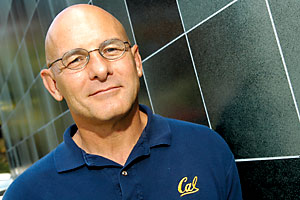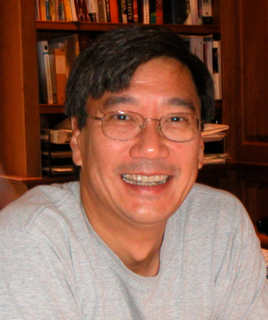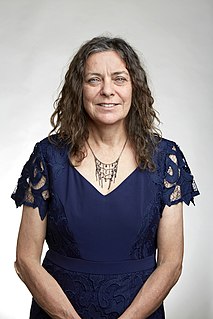Related Research Articles

The University of California, Los Angeles (UCLA) is a public land-grant research university in Los Angeles, California. UCLA's academic roots were established in 1881 as a teachers college then known as the southern branch of the California State Normal School. This school was absorbed with the official founding of UCLA as the Southern Branch of the University of California in 1919, making it the second-oldest of the 10-campus University of California system.

Yuan Tseh Lee is a Taiwanese chemist and a Professor Emeritus at the University of California, Berkeley. He was the first Taiwanese Nobel Prize laureate who, along with the Hungarian-Canadian John C. Polanyi and American Dudley R. Herschbach, won the Nobel Prize in Chemistry in 1986 "for their contributions to the dynamics of chemical elementary processes".

Richard Manning Karp is an American computer scientist and computational theorist at the University of California, Berkeley. He is most notable for his research in the theory of algorithms, for which he received a Turing Award in 1985, The Benjamin Franklin Medal in Computer and Cognitive Science in 2004, and the Kyoto Prize in 2008.

David Jonathan Gross is an American theoretical physicist and string theorist. Along with Frank Wilczek and David Politzer, he was awarded the 2004 Nobel Prize in Physics for their discovery of asymptotic freedom. Gross is the Chancellor's Chair Professor of Theoretical Physics at the Kavli Institute for Theoretical Physics (KITP) of the University of California, Santa Barbara (UCSB), and was formerly the KITP director and holder of their Frederick W. Gluck Chair in Theoretical Physics. He is also a faculty member in the UCSB Physics Department and is currently affiliated with the Institute for Quantum Studies at Chapman University in California. He is a foreign member of the Chinese Academy of Sciences.
Andrea Mia Ghez is an American astrophysicist and professor in the Department of Physics and Astronomy and the Lauren B. Leichtman & Arthur E. Levine chair in Astrophysics, at the University of California, Los Angeles. Her research focuses on the center of the Milky Way galaxy.

David Andrew Patterson is an American computer pioneer and academic who has held the position of professor of computer science at the University of California, Berkeley since 1976. He announced retirement in 2016 after serving nearly forty years, becoming a distinguished software engineer at Google. He currently is vice chair of the board of directors of the RISC-V Foundation, and the Pardee Professor of Computer Science, Emeritus at UC Berkeley.

Henry Samueli is an American businessman, engineer, and philanthropist.

Armand Paul Alivisatos is an American chemist who serves as the 14th president of the University of Chicago. He is a pioneer in nanomaterials development and an authority on the fabrication of nanocrystals and their use in biomedical and renewable energy applications. He was ranked fifth among the world's top 100 chemists for the period 2000–2010 in the list released by Thomson Reuters.

Sir James Fraser Stoddart is a British-American chemist who is Board of Trustees Professor of Chemistry and head of the Stoddart Mechanostereochemistry Group in the Department of Chemistry at Northwestern University in the United States. He works in the area of supramolecular chemistry and nanotechnology. Stoddart has developed highly efficient syntheses of mechanically-interlocked molecular architectures such as molecular Borromean rings, catenanes and rotaxanes utilising molecular recognition and molecular self-assembly processes. He has demonstrated that these topologies can be employed as molecular switches. His group has even applied these structures in the fabrication of nanoelectronic devices and nanoelectromechanical systems (NEMS). His efforts have been recognized by numerous awards including the 2007 King Faisal International Prize in Science. He shared the Nobel Prize in Chemistry together with Ben Feringa and Jean-Pierre Sauvage in 2016 for the design and synthesis of molecular machines.

Asad Ali Abidi is a Pakistani-American electrical engineer. He serves as a tenured professor at University of California, Los Angeles, and is the inaugural holder of the Abdus Salam Chair at the Lahore University of Management Sciences (LUMS). He is best known for pioneering RF CMOS technology during the late 1980s to early 1990s. As of 2008, the radio transceivers in all wireless networking devices and modern mobile phones are mass-produced as RF CMOS devices.
Margaret H. Wright is an American computer scientist and mathematician.
Mau-Chung Frank Chang is Distinguished Professor and the Chairman of Electrical Engineering department at the University of California, Los Angeles, where he conducts research and teaching on RF CMOS design, high speed integrated circuit design, data converter, and mixed-signal circuit designs. He is the Director of the UCLA High Speed Electronics Laboratory.

Peter S. Kim is an American scientist. He was president of Merck Research Laboratories (MRL) 2003–2013 and is currently Virginia & D.K. Ludwig Professor of Biochemistry at Stanford University, Institute Scholar at Stanford ChEM-H, and Lead Investigator of the Infectious Disease Initiative at the Chan Zuckerberg Biohub.
Utpal Banerjee is a Distinguished Professor of the Department of Molecular, Cell and Developmental Biology at UCLA. He obtained his Bachelor of Science degree in Chemistry from St. Stephen's College, Delhi University, India and obtained his Master of Science degree in Physical Chemistry from the Indian Institute of Technology, Kanpur, India. In 1984, he obtained a PhD in Chemistry from the California Institute of Technology where he was also a Postdoctoral Fellow in the laboratory of Seymour Benzer from 1984-1988.

Jillian Fiona Banfield is Professor at the University of California, Berkeley with appointments in the Earth Science, Ecosystem Science and Materials Science and Engineering departments. She leads the Microbial Research initiative within the Innovative Genomics Institute, is affiliated with Lawrence Berkeley National Laboratory and has a position at the University of Melbourne, Australia. Some of her most noted work includes publications on the structure and functioning of microbial communities and the nature, properties and reactivity of nanomaterials.
Arnold J. Berk is an American professor of microbiology and immunology at the University of California, Los Angeles. He was a member of the Molecular Biology Institute, a division of University of California, Los Angeles. He was one of the discoverers of RNA splicing. His work focuses on gene regulation in DNA viruses. In 1998 he was elected to the American Academy of Arts and Sciences. In 2003, he received a MERIT Award from the National Cancer Institute. He authored editions 3 through 10 of the influential basic textbook Molecular Cell Biology published by Macmillan
Marc Kamionkowski is an American theoretical physicist and currently the William R. Kenan, Jr. Professor of Physics and Astronomy at Johns Hopkins University. His research interests include particle physics, dark matter, inflation, the cosmic microwave background and gravitational waves.

Hitoshi Murayama (村山斉) is a Japanese-born physicist with notable contributions in the fields of particle physics and cosmology. He is currently a professor at the Center for Theoretical Physics at the University of California, Berkeley, and Director of the Kavli Institute for the Physics and Mathematics of the Universe at the University of Tokyo.
Sabeeha Sabanali Merchant is a Professor of Plant Biology at the University of California, Berkeley. She studies the photosynthetic metabolism and metalloenzymes In 2010 Merchant led the team that sequenced the Chlamydomonas genome. She was elected a member of the National Academy of Sciences (NAS) in 2012.
References
- ↑ "S. Lawrence Zipursky". amcad.org. Retrieved May 22, 2017.
- ↑ "S. Lawrence Zipursky". ucla.edu. Retrieved April 20, 2017.
- ↑ "S. Lawrence Zipursky". ucla.edu. Retrieved April 20, 2017.
- ↑ "S. Lawrence Zipursky". nasonline.org. Retrieved May 23, 2017.
- ↑ "S. Lawrence Zipursky". hhmi.org. Retrieved May 23, 2017.